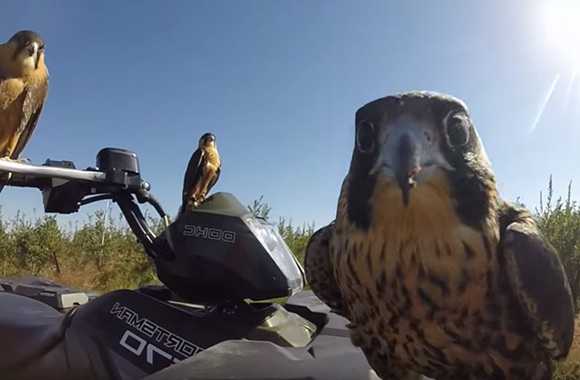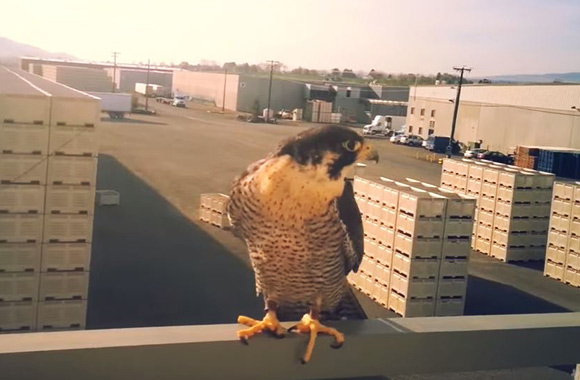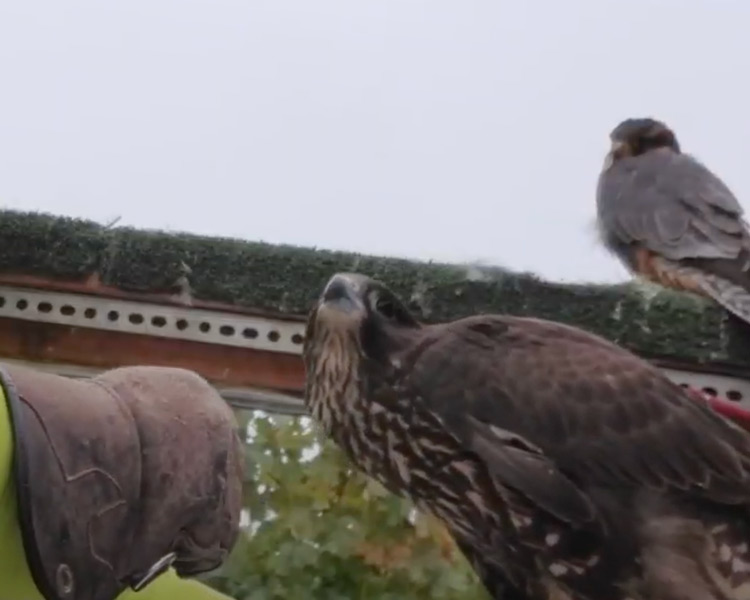Bird Abatement with Falcons
There are different bird control method varying based on the environment and the extent of the infestation. Investing in active deterrent methods is the surefire way of keeping the menace in check. When looking for birds control methods with the least impact on the environment, seek the more traditional solutions.
Falconry Bird Control: The use of hawks and falcons to deter pest birds is not a new concept. In fact, most companies across the globe use this technique based on the fact that it is one of the cheapest and highly effective techniques that come with the least environmental impact. Active bird control using falcons has been implements in numerous locations such as farm files, industrial sites, airports, as well as inner city areas.


This technique entails the use of a specially trained falcon to scare or even devour the pest birds. Besides being one of the most effective bird control methods, it is also the most budget friendly option compared to other techniques such as netting. However, unlike with other methods that you can implement on your own, the falcon bird control method requires you to invest in the services of a professional. Keep in mind that this technique is a non-lethal ethical as well as a sustainable solution to the bird menace. The professional you hire will first have to survey the extent of the bird infestation, before commencing on the project.
If the infestation is minimal, the professional you hire may recommend passive bird deterrent methods which in this case will be effective in providing you will the level of control needed and a lower cost than hiring the falcon deterrent service. Your bird control service provide will provide you with specialists recommendations regarding the installation of the birds deterrent services such as the use of bird distress calls and the hawk kites, or recommend if bird proofing many be the best bird control solution for your case.
The use of falcons to get rid of pest pigeons and gulls is one of the most popular methods with companies now competing with the traditional pest control services for a slice of the pie. The use of falcons as a pigeon deterrent and removal option is marketed as a green and natural control method that is also said to be humane and in the tune of nature.
However, it should be clearly noted that the use of predator birds to control bird infestations is a lethal option that is also not human. This is in light of the fact that it is impossible to train the raptors not to devour the targeted species and once they have the bird in their claws, the resultant display as the raptor devours the prey into tiny bits does not in any way qualify as humane. It is also worth noting that the raptors used to deter pigeons are naturally not predators of this species and as such the method does not qualify as natural or in tune with nature.
The technique involves the use of trainer hawks or falcons to kill other birds in most cases for sport or pleasure. Falconry has for year been known to be a blood-sport and as such, the companies providing such services usually have a hard time convincing their clients of the effectiveness of the technique and whether it is indeed a human means of bird control.
However, there is no doubt that this technique has value, which is why it is widely used across the globe especially in the urban areas where they are used to deter pigeons. Depending on the extent of the infestation, this technique can be quite expensive and a source of negative publicity for the clients using it. Imagine a scenario whereby the falcon catches a pigeon and guts it into pieces before your customers and other onlookers. Without a doubt, you will soon be dealing with negative publicity that can be extremely damaging for the business.
For years now, the commercial bird control has been characterized by use lethal control methods to deal with bird related problems. According to scientific studies, most of these lethal methods have been found to be ineffective but also quite unpopular in the public domain. As such, the use of falcons has maintained a low profile even after being introduced more than a decade ago. Fortunately, the image of these services is starting to change with most bird control companies now talking publicly about these methods and their effectiveness in bird control.
As indicated above, the use of falcons to deter birds is not a new method. As history books will tell us, this control method was used to disperse seagulls and other pest birds from farms. Their use in urban settings to control pigeons and other pest birds is less common due to the fact that you will need these services at least 3 times a week and for about 1-3 hours a day. This makes it’s a costly affair that not so many business are willing to consider. However, the cost of the services will differ from one service provider to another. If you think that this is the best bird control method for your case, shop around to find the best solutions that are also budget friendly.

It seems counterproductive to fight a nuisance bird problem with more birds, but that's exactly what happens in bird abatement with falcons. Falcons and other hawks are predators for smaller birds, such as pigeons and seagulls, so when a falcon is used in bird abatement, it essentially scares the nuisance ones away. This works in very much the same way as the stereotypical cat and mouse situation. The falcon is released, flies over the area, scares the nuisance birds (without harming them), and then returns.
With repeated use, habitual roosting, feeding and nesting behavior is broken by falcon bird abatement. Seagulls, pigeons and other smaller birds are unable to fly back to their regular spots because of the predators, so the pests are eventually forced to find somewhere else.
There are a number of situations or building types where abatement with falcons is preferable over other types of bird control and removal. This includes large and open areas, such as golf courses or parks; buildings with a protected status; difficult buildings that can’t easily have netting, bird spike strips, or other devices installed; when a more nature-driven approach is called upon; and to deal with large flocks, or widespread/long-term problems.


